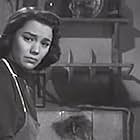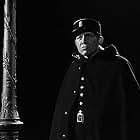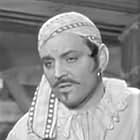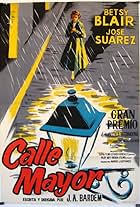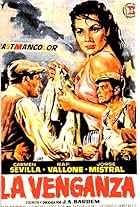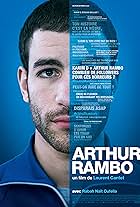Pilar and Juan are a happy married couple with very few resources. One day they decide to play Christmas Lottery. But Pilar purchase tickets behind her husband's back for a raffle of a lamb,... Read allPilar and Juan are a happy married couple with very few resources. One day they decide to play Christmas Lottery. But Pilar purchase tickets behind her husband's back for a raffle of a lamb, which eventually she ends up winning. Their children are delighted with the new animal, a... Read allPilar and Juan are a happy married couple with very few resources. One day they decide to play Christmas Lottery. But Pilar purchase tickets behind her husband's back for a raffle of a lamb, which eventually she ends up winning. Their children are delighted with the new animal, although Juan, disappointed, complains about money.Then they decide to serve the lamb in Ch... Read all
Photos
- Pilar
- (as Julita Martínez)
- Juan
- (as Bernard Lajarrigue)
- Pili
- (as Pili Sanclemente)
- Soldado de Artillería
- (as Manuel Alejandre)
- Director
- Writers
- All cast & crew
- Production, box office & more at IMDbPro
Storyline
Did you know
- TriviaFive different lambs were used during the filming of the movie due to their fast growth
Endearing comedy of manners giving a neorealist portrait of Spain in 1954 that is quite brilliant. It is a simple and plain comedy about a couple with children who live in a precarious economic situation, winning a lamb in a raffle and displaying a Christmas atmosphere that does not skimp on black humor or some social criticism. It is worth stopping to contemplate the sequence of dreams with certain satirical connotations about the army and the Church that the strict censors of the time failed to see. It is a likeable film, but in general it suffers from excessive conformism, which results in a product that is as pleasant as it is harmless. The film is enhanced by a memorable work by the cast of actors with special mention for the two protagonists: Julia Martinez and the Italian Bernard La Jarrige. Although it is not understood why the unknown Italian actor was hired, because it is not even an Italian co-production but a purely Spanish one. One of the main entertainments of the film is discovering which notable secondary characters appear throughout it, among which are the following: Beni Deus, Antonio Ozores, Carlos Goyanes, Manuel Alexandre, José Riesgo, Francisco Bernal, Antonio Riquelme, Agustín González, Manuel Alexandre, Josefina Serratosa, Rafael Bardem, José María Prada, Matilde Muñoz Sampedro, Arturo Marín, the always essential José Luis López Vázquez and a cameo by the director Juan Antonio Bardem himself at a bar. Without forgetting the friendly lamb, in fact five different lambs were used during the filming of the film due to their rapid growth.
The film is well set in the fifties with appropriate sets by the prestigious production designer Gil Parrondo, very well photographed by the famous cameraman Cecilio Paniagua, being filmed appropriately in locations, streets and squares of Madrid and CEA Studios, Ciudad Lineal, Madrid, but a perfect remastering is necessary, because the copy is partially defective. The film was competent made and with a lively pace directed by Juan Antonio Bardem. This great filmmaker was member of the jury of the Cannes Film Festival in 1955, as well as member of the jury of the Berlin International Film Festival in 1993. He was the son of Rafael Bardem and Matilde Muñoz Sampedro and father of Miguel Bardem and older brother of Pilar Bardem. He first worked for the film department of the Ministry of Agriculture, then became a screenwriter. Bardem directed the essential ¨Calle Mayor¨ (international title Main Street¨1956). Bardem was an outspoken critic of Franco's regime; His political views prevented him from obtaining a diploma from the Spanish Film Institute in 1947. From then on, he worked as a critic and finally broke into cinema as writer/director of the highly acclaimed ¨Muerte de un ciclista¨ or Death of a Cyclist ( 1955), which won the Cannes International Critics' Prize in 1956. Other classic films that he wrote or directed are the following: ¨Bienvenido Mr. Marshall or Welcome Mr. Marshall¨ (co-directed by Luis García Berlanga), ¨Esa Pareja Feliz¨, ¨Cómicos¨ , ¨Sonatas¨, ¨La Venganza¨, among others. Felices Pascuas rating: 6/10. Decent comedy, essential for fans of Spanish cinema.
Details
- Release date
- Country of origin
- Official site
- Language
- Also known as
- Happy Easter
- Filming locations
- Production company
- See more company credits at IMDbPro
- Runtime1 hour 23 minutes
- Color
Contribute to this page



